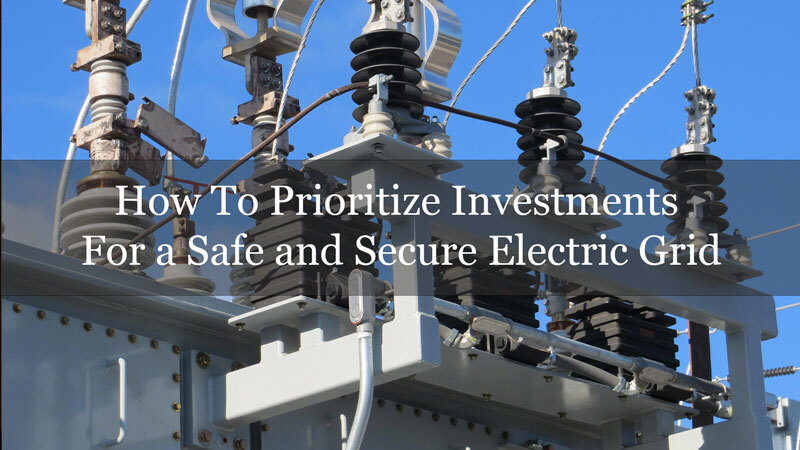The electric grid is part of the critical national infrastructure (CNI), delivering services that are essential for modern life. The grid’s reliability and ability to meet consumers’ demands at all times is of national interest. However, the electric grid’s reliability, safety, and availability are impaired by failing to address emerging trends and challenges that demand a whole new way of technology investment.
Electric grid modernization is urgent
International and transnational organizations, such as the European Union, and private entities, such as McKinsey & Company, have identified emerging challenges that make the electric grid modernization urgent:
- Customers’ demand for reliability and affordability. Accelerated by the working habits of remote workforces, electric grid customers are asking for reliable electricity to support their “new” work environment. At the same time, the impact of economic recession on household revenues highlights the importance of being able to deliver high-quality services at a low cost.
- Climate change global risks threaten to disrupt operations. According to the World Economic Forum 2020 Global Risks report, climate change and cyber-attacks are the highest-ranked risks to the electric grid operation. “Biodiversity loss,” “natural catastrophes,” and “extreme weather events” are all in the top five risks for doing business.
- Technology innovations add value but expand the threat surface. Sector digitalization efforts have bridged the gap between the physical, operational technology, and information technology systems used to operate the grid. While the adoption of smart grid management systems and devices offer significant improvements and benefits, they also expand the attack surface that malicious actors can exploit to gain target and compromise critical systems.
- Market reform to support sustainable energy initiatives. To address the increasing demand for a climate-friendly energy sector, the grid is becoming more decentralized with the use of interconnected Distributed Energy Resources (DERs) such as wind, solar, and hydropower installations. At the same time, the management of a bidirectional electric grid has become more complex with the adoption of electric vehicles, smart appliances, and flexible micro-grids. The energy market reform has introduced new players, such as energy resellers and aggregators, who may have neither the skills nor the resources to address modern challenges and maintain service reliability and safety.
Barriers to grid modernization
Despite the warning signs that the electric grid needs to be modernized, such efforts are not always successful. For example, the efforts in creating a smart grid with the introduction of Advanced Metering Infrastructure (AMI) both in the United States and in the EU have not reaped the benefits everyone was expecting because of the low adoption rate.
According to a joint report by the Department of Energy and SmartGrid.gov, AMI benefits include “reduced costs for metering and billing, lower utility capital expenditures from reductions in peak demand and better asset utilization, and faster outage restoration that costs less.” Despite the obvious benefits, a McKinsey & Company report indicates that power utilities have failed to convince customers of the benefits of AMIs. According to the report, the lack of AMIs results in increased frequency and severity of events disrupting the electric grid in the US. The situation is not different in the EU, where only 43% of the grid customers are equipped with smart meters.
Failure to integrate smart technology successfully and effectively in the electric grid leaves the sector open to vulnerabilities and expanded threat surface because of the shifting global environment and adversaries targeting the industry to damage the infrastructure and disrupt society. When planning to invest in emerging technologies, utilities are facing various barriers:
- Value proposition and desired outcomes, such as flexibility, resilience, and security, are not clearly defined and quantified.
- Investment programs are siloed and do not consider the interconnectedness of the electric grid.
- Lack of executive buy-in for modernization plans, resulting in inadequate resources allocated to support these plans.
- Existing IT and OT systems are legacy and have constrained resources that cannot support increased data traffic or security patches.
A holistic approach to grid modernization
To overcome the above pitfalls, electric grid utilities need to adopt a holistic, step-by-step modernization plan with measurable KPIs and outcomes. The following steps will help electric grid providers secure their investments and ensure that their efforts would have a greater adoption by all stakeholders and customers.
Set priorities
While traditionally reliability and safety were the only priorities for any investments, priorities have now shifted towards security, flexibility, resilience, and provision of clean energy. This evolution of priorities represents both an opportunity to deliver expanded outcomes and benefits to utilities’ customers and a challenge to (re)define the relationship between investments and customers’ expectations.
Build digital-physical investments
While most people think of modernization as digitalization, this is not true for the electric grid. Modernization programs should also focus on retrofitting obsolete designs, such as upgrading substations and feeders to higher voltage levels. The McKinsey & Company research highlights that the best approach is grouping investments in packages with a common outcome. For example, while feeder undergrounding can support a high level of resilience, segmenting these feeders provides greater reliability. Following this approach, utilities will ensure that they address the customer expectations without leaving their investments open to risks and vulnerabilities.
Tailor investments to local needs
Modernization investments need to be based on clear and measurable goals and objectives to produce tangible benefits. These objectives need to consider the business environment; decarbonization initiatives, electric vehicles and charging ports, climate change, and severe weather conditions, remote communities all are consideration factors that drive investments.
Modernize workflows and processes
Electric grid utilities should not focus only on modernizing equipment and infrastructure. They should also need to emphasize modernizing business processes. Relying on obsolete, often bureaucratic processes to maintain and monitor the grid eliminates all the benefits offered by smart grids. Business processes need to shift and evolve together with technology. The reliability and flexibility benefits offered from installing smart-resources on the grid will not be materialized if the established processes do not take advantage of these benefits. Having clear visibility into the available resources and their data streams will help grid utilities not only to take advantage of their benefits but also to secure them against cyber threats and consequences.
Invest in technology that supports modern workflows
Without adequate technology to provide real visibility and insight into the grid operating conditions, utilities will not be able to reap the benefits and the added value of smart sensors. Effectively integrating OT and IT systems can help maintain accurate data while making it available for other enterprise applications. In addition, the convergence of IT and OT can help utilities modernize their processes. However, they need to pay close attention to the cyber risks that emerge from this integration, which threaten to disrupt the grid safety and reliability.
Create milestones
Grid modernization is a project that requires dedication and determination since the effort and the capital required will last beyond a five-year span. To establish and maintain buy-in and support from all involved stakeholders, utilities need to define clear milestones and success indicators over time. They also need to measure the organization’s maturity and adjust business processes to meet the modernization objectives.
How ORIGNIX can help
Developing a grid modernization plan is an iterative and challenging exercise that requires determination and discipline. ORIGNIX can help utilities develop and implement a modernization plan to meet customer demands and address new challenges by applying a rigorous and disciplined approach towards digital-physical convergence. Utilities can make risk-based and informed decisions to maximize capital investment and reap the benefits of technology. At the same time, HAZOP and cyber-HAZOP studies can ensure that all hazardous risks and consequences are identified and addressed adequately. To learn how we can help you, visit our website.



